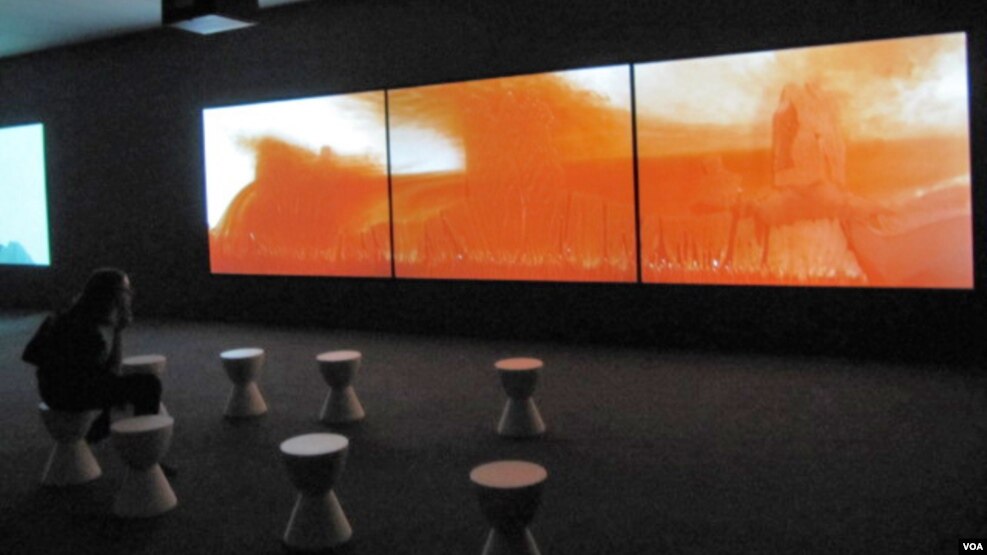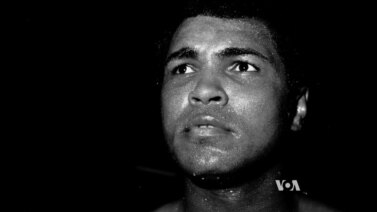
Artist Rachel Rymont did not plan on spending part of her day inside a dark building when she visited Washington, D.C. But she changed her mind after taking one look at a new exhibit at the world-famous Smithsonian Institution.
The exhibit can be seen at the Smithsonian's National Museum of African Art. It is called "Senses of Time: Video and Film-based Works of Africa".
"Senses of Time" is a video and film show that explores how people experience time.
"It is a really different experience than being in a gallery or looking at a painting," said Rymont, who lives in Baltimore, Maryland. "It kind of forces you to step back and co-exist with the piece instead of just glancing at it."
Time is the main subject that connects all of the works, although the subject matter differs from work to work.
The exhibit includes Yinka Shonibare's work "Un Ballo in Maschera." It is based on Giuseppe Verdi's 1859 operatic work, “A Masked Ball.”
Shonibare's piece questions the nature of time. In it, a leader, played by a woman, is killed. She then rises again and dances once more.
Moataz Nasr's film, “The Water,” is very different from Shonibare's colorful work.
Nasr's film is in black and white. Faces appear in water on the ground, but before you, the viewer, can see any details, a foot steps on the image.
Art and Politics
Rachel Rymont liked how the exhibit was political, but did not try to teach about politics in an unwanted way.
"A lot of time with political work, there's a tendency for things to get a bit cold or didactic, but that didn't happen in there," she said. "All of it was very moving, and it was very human."
Perhaps the most openly political piece is Sammy Baloji's "Memoire.” It was filmed against a series of former copper mines in the Democratic Republic of Congo.
Choreographer and dancer Faustin Linyekula does a dance, while speeches from some of the country's earlier and current leaders play.
The piece shows how the reality of the present has not lived up to the promises of the past.
Linyekula expresses this idea in a heartbreaking way by shouting, "Vive l'independence" (Long live independence) to nothing but silence.
Other works tell of difficulties that political activists faced in the past.
For example, Sue Williamson's work, called "There's Something I Must Tell You", shows six South African women from the generation of former President Nelson Mandela. The women talk about their experiences to their young relatives.
In total, seven films are shown at the same time in the African art museum's exhibit hall. The experience tests not only perceptions of time, but also ideas about what artists can accomplish with film.
I'm John Russell.
Rosie Brown wrote this report for VOANews.com. John Russell adapted it for Learning English. George Grow was the editor.
We want to hear from you. Write to us in the Comments Section.
Words in This Story
exhibit - n. an object or a collection of objects that have been put out in a public space for people to look at
gallery - n. a room or building in which people look at paintings, sculptures, etc.
choreographer - n. a person who decides how a dancer or group of dancers will move during a performance
accomplish - v. to succeed in doing (something)
viewer - n. someone who sees or watches something


